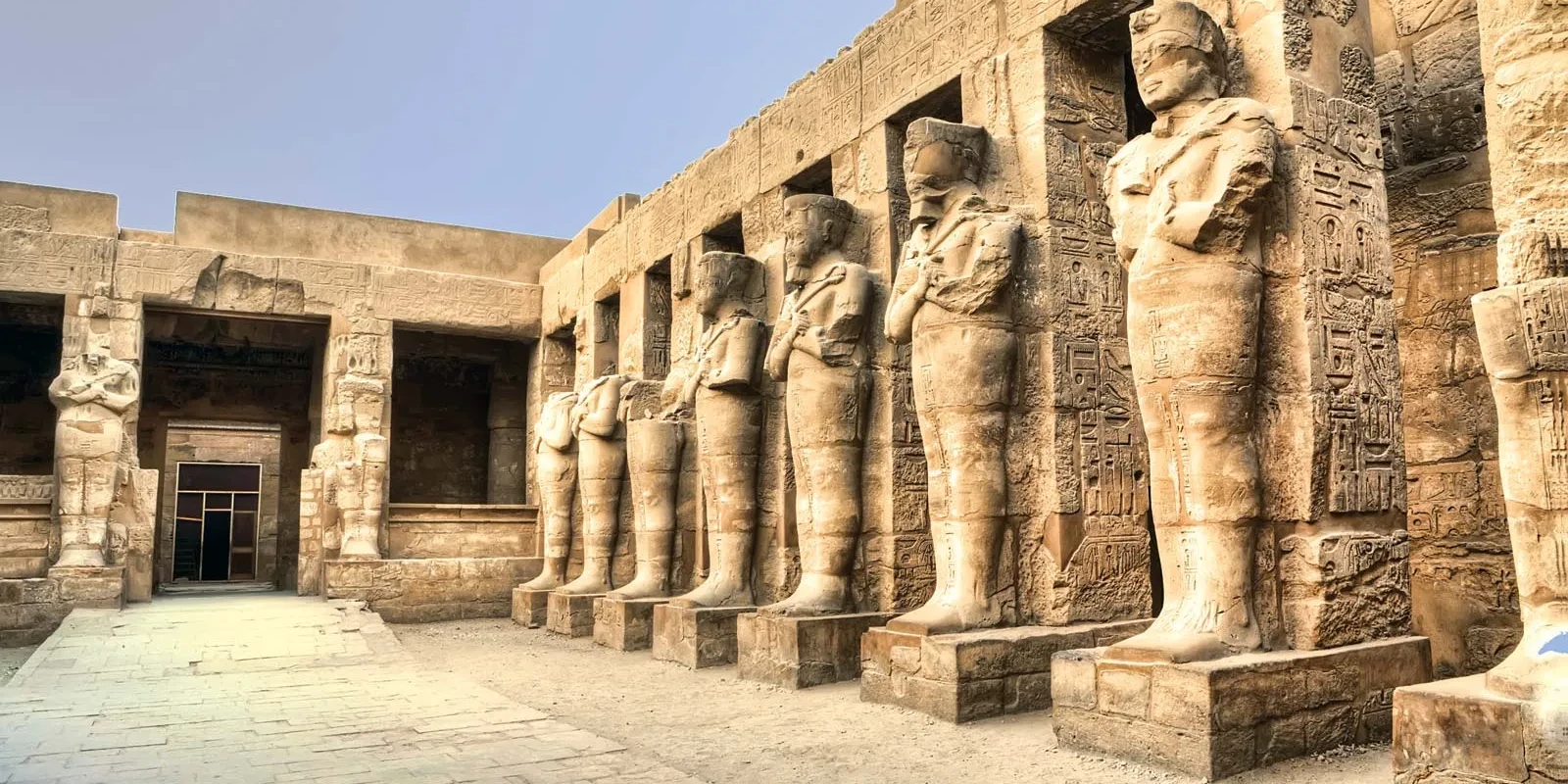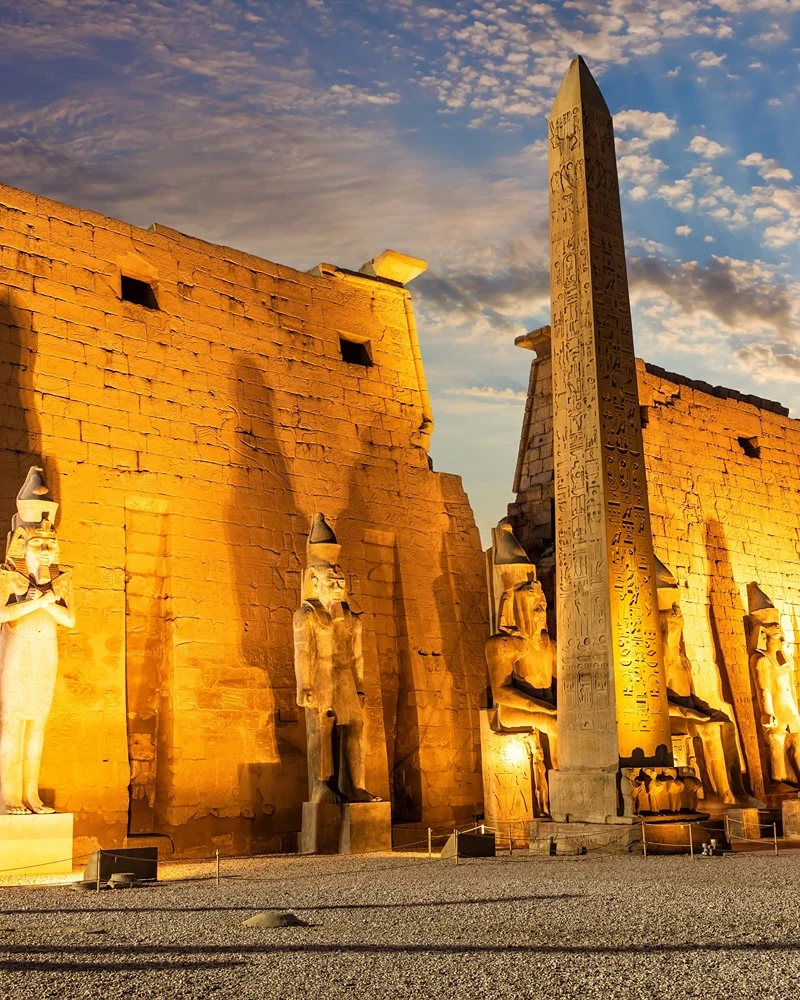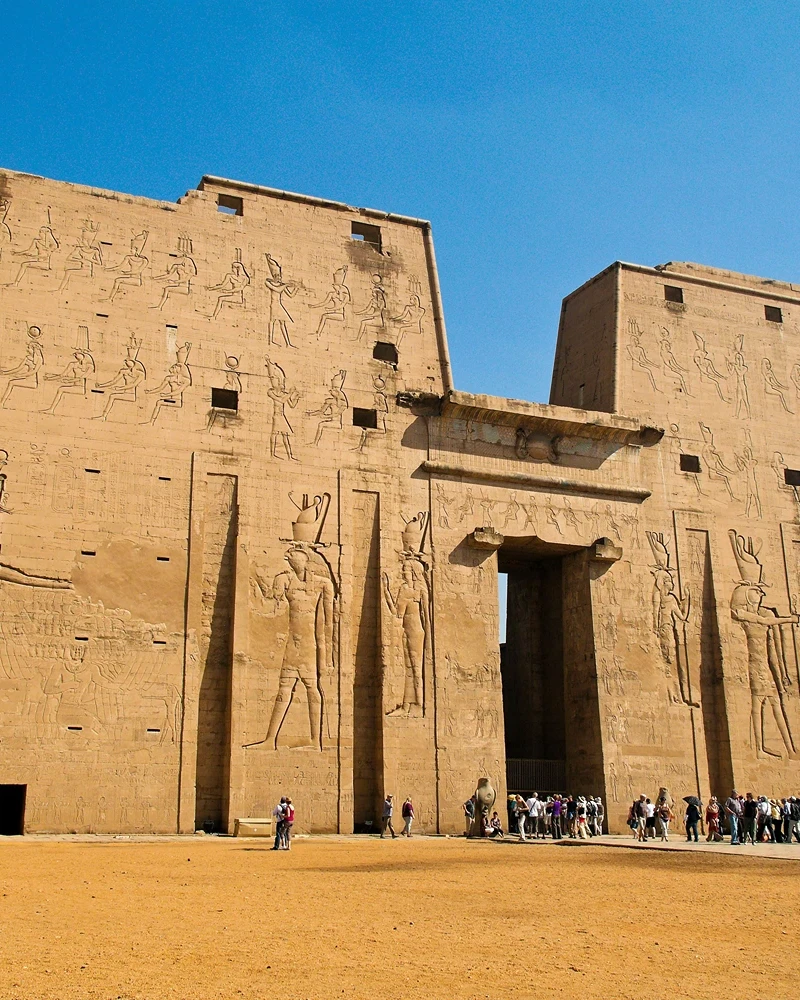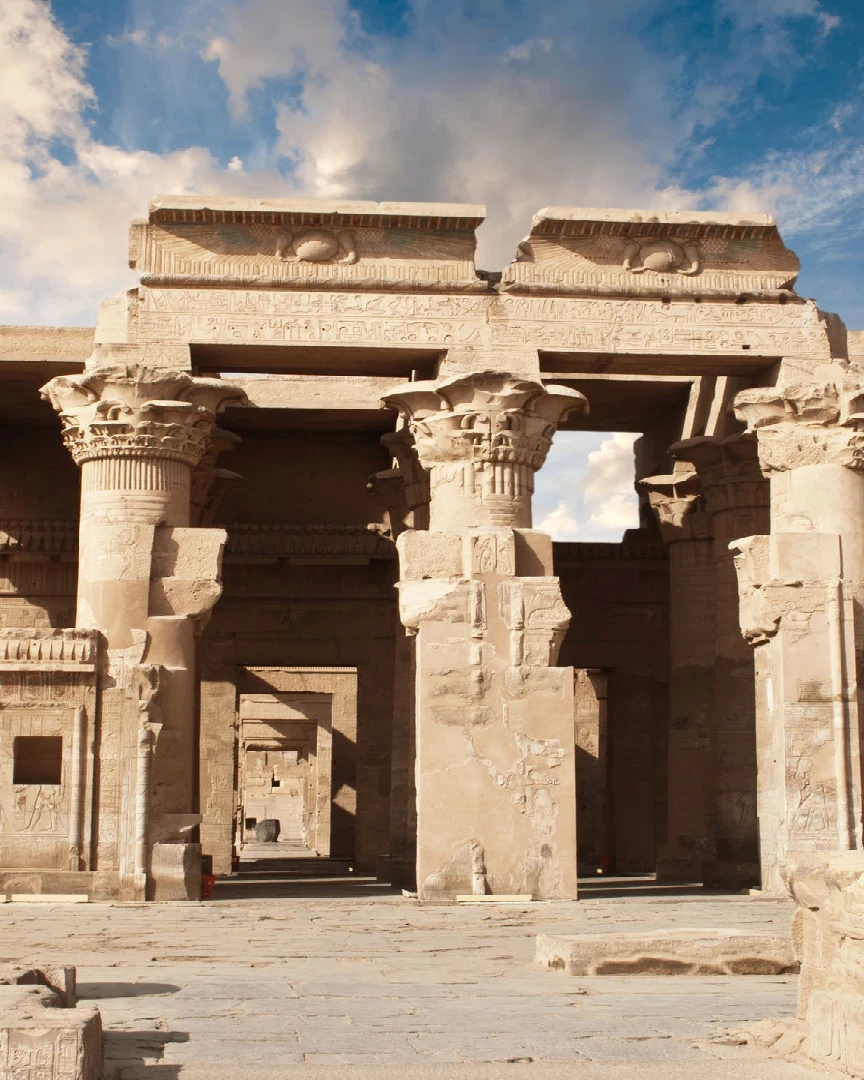What ancient site can rival the grandeur and intrigue of the Karnak Temple? This iconic Egyptian complex, erected over nearly two millennia, stands not just as a monument, but as a testament to history itself. From its dynastic origins around 2055 BC to its architectural contributions from various pharaohs, Karnak offers a labyrinth of stories etched in stone. Ready to delve into the Karnak Temple’s historical significance and get insider tips for an unforgettable visit? Read on to uncover everything you need to know about this fascinating treasure.
The Historical Significance of Karnak Temple
The construction of the Karnak Temple dates back to around 2055 BC and continued until approximately 100 AD. This extended timeline reflects its importance over various dynasties, making it a living document of ancient Egyptian history. Built primarily as a religious center, the temple complex was dedicated to the Theban triad of Amun, Mut, and Khonsu.
Contributions from numerous pharaohs, including Thutmose III, Ramses II, and Hatshepsut, led to the temple’s architectural evolution. Each ruler added their own structures and embellishments, resulting in a complex that showcases a variety of architectural styles and techniques. Notably, the efforts of these pharaohs have made Karnak one of the most significant and expansive temples in Egypt.
Graffiti found within the temple adds another layer to its historical narrative. These inscriptions, left by travelers over centuries, provide insight into the temple’s role as a pilgrimage site and its use during different periods. The graffiti marks help archaeologists identify burial levels and understand the temple’s significance through various eras.
The non-homogeneous architectural plan of Karnak Temple is a direct result of its continuous development. Unlike many other ancient structures that follow a singular architectural vision, Karnak is a patchwork of different periods and styles. This unique aspect makes it a fascinating site for both historians and visitors, offering a tangible timeline of Egyptian architectural evolution.
Architectural Marvels of the Karnak Temple
Karnak Temple’s architecture is a testament to the skill and artistry of ancient Egyptian builders. The temple complex features a variety of structures that showcase different architectural styles and techniques from various periods. The layout is non-homogeneous due to continuous additions by successive pharaohs, resulting in a structure that is both historically rich and architecturally diverse.
The Great Hypostyle Hall is one of the most remarkable features of Karnak Temple. It is the largest single chamber of any temple in the world, covering 4,983 square meters. The hall contains 134 massive columns arranged in sixteen rows, with the central columns standing at an impressive 21 meters high. These central columns retain much of their original color, offering a glimpse into the temple’s vibrant past. The sheer scale and intricate carvings of the Hypostyle Hall make it a must-see for any visitor.
Ramses III also made significant architectural contributions to Karnak Temple. His additions include the Temple of Ramses III, which exemplifies typical New Kingdom architecture. This includes an entrance pylon, an open court, colonnades, and sanctuaries. These structures not only add to the temple’s grandeur but also highlight the architectural evolution that took place over centuries.
- Great Hypostyle Hall
- Temple of Ramses III
- Entrance Pylon
- Colonnades
- Sanctuaries
- Central Columns
The architectural marvels of Karnak Temple extend beyond these key features. The entrance pylon serves as a grand gateway, setting the stage for the awe-inspiring structures within. Colonnades line the open courts, leading visitors through a journey of historical and architectural splendor. The sanctuaries, often hidden from direct view, offer a sacred space for worship and rituals. Together, these elements create a complex that is not only a historical treasure but also an architectural masterpiece.
Religious and Cultural Importance of Karnak Temple
The Karnak Temple holds immense religious significance as it primarily honors Amon-Ra, his consort Mut, and their son Khonsu. Amon-Ra, the king of the gods, was central to Theban worship, symbolizing the sun and creation. Mut, often depicted as a lioness, represented motherhood and was revered as the “Mother of the Gods.” Their son, Khonsu, was the god of the moon, known for his ability to drive away evil spirits. The worship of this divine triad made Karnak a crucial religious center, drawing pilgrims from all over ancient Egypt.
- Amon-Ra worship
- Valley Festival
- Opet Festival
- Sacred Lake rituals
- Priesthood and temple rituals
The Karnak Temple was also the focal point for several major festivals, most notably the Valley Festival and the Opet Festival. The Valley Festival celebrated the dead and involved a procession from Karnak to the temples on the western bank of the Nile. The Opet Festival, one of the most significant religious events, celebrated the renewal of the pharaoh’s divine power. During this festival, statues of Amon-Ra, Mut, and Khonsu were paraded from Karnak to the Luxor Temple, symbolizing the union of the gods and the rejuvenation of the pharaoh’s rule.
The Sacred Lake within the temple complex played a vital role in religious practices. This man-made lake was used by priests for purification rituals before performing their sacred duties. The lake also served as a symbolic representation of the primeval waters of creation, reinforcing the temple’s spiritual significance. Rituals performed here included daily ablutions, offerings to the gods, and various ceremonies crucial to maintaining the temple’s sanctity.
Visitor Information for Karnak Temple
Karnak Temple is a must-visit site for anyone traveling to Egypt. The temple is open every day from 6:00 AM to 5:30 PM, providing ample time for visitors to explore its expansive grounds. Located on the eastern bank of the Nile River, the temple is easily accessible from the city of Luxor. Visitors should plan to spend several hours at the site to fully appreciate its historical and architectural significance. Guided tours are available and are highly recommended for those wanting an in-depth understanding of the temple’s history and features.
| Information | Details |
| Opening Hours | 6:00 AM to 5:30 PM |
| Location | Eastern bank of the Nile River |
| Ticket Price | [Insert Current Price] |
| Guided Tours | Available for booking |
| Light Show | Evening performances |
| Best Time to Visit | Early morning or late afternoon |
One of the highlights of a visit to Karnak Temple is the Karnak Temple light show, which takes place in the evenings. This mesmerizing show uses light and sound to narrate the history and significance of the temple, offering a unique and captivating way to experience the site. Tickets for the light show can be purchased in advance, and the performance is a must-see for those wanting to experience the temple in a different light. To avoid crowds and the midday heat, the best times to visit are early in the morning or late in the afternoon.
Key Structures Within the Karnak Temple Complex
The Karnak Temple complex is a vast and intricate site, with its most notable precinct being the Precinct of Amun-Re. This precinct is the largest and the only one open to the public. It features a variety of structures that span different periods of ancient Egyptian history. Among these structures, the Hypostyle Hall stands out with its 134 massive columns, creating an awe-inspiring view for visitors. The precinct also includes several pylons, chapels, and obelisks, each contributing to the temple’s grandeur and historical depth.
- Precinct of Amun-Re
- Temple of Hatshepsut
- Third Pylon
- Sanctuary
- Sacred Lake
The Temple of Hatshepsut within the Karnak complex is particularly significant. It features a prominent obelisk, one of the tallest in Egypt, standing at about 30 meters. This obelisk was erected to honor the god Amun and to commemorate Hatshepsut’s reign. Its inscriptions and carvings provide valuable insights into her rule and the religious practices of the time. The temple itself is a testament to her architectural ambition and devotion to Amun.
Two other key structures within the Karnak complex are the Third Pylon and the Sanctuary. The Third Pylon, constructed by Amenhotep III, acts as a monumental gateway leading to the inner sanctuaries. The Sanctuary, often hidden from direct view, served as a sacred space where only the high priests and pharaohs could perform rituals. The Sacred Lake, another significant feature, was used for purification rituals and symbolizes the primeval waters of creation. These structures collectively make Karnak Temple a rich tapestry of religious, historical, and architectural significance.
Exploring Karnak Temple: Tours and Tips
Visitors to Karnak Temple have several tour options to choose from. Shared group tours are a cost-effective way to explore both Luxor and Karnak Temple. These tours often include a knowledgeable guide who can provide insights into the temple’s history and significance. For a more personalized experience, private transfers and day tours are also available. One popular option is a day tour to Luxor from Cairo by plane, which allows visitors to make the most of their time in Egypt.
- Book tickets in advance
- Consider a guided tour for in-depth knowledge
- Visit during early morning or late afternoon to avoid crowds
- Wear comfortable clothing and shoes
- Don’t miss the evening light show
To make the most out of a visit to Karnak Temple, it is advisable to book tickets in advance, especially for the popular Karnak Temple light show, which uses light and sound to narrate the temple’s history. Guided tours are highly recommended for those seeking a deeper understanding of the site. Visiting during the early morning or late afternoon can help avoid the crowds and the midday heat. Wearing comfortable clothing and shoes is essential due to the extensive walking required. Finally, the evening light show is a must-see experience that offers a unique perspective on this ancient marvel.
Final Words
From its inception around 2055 BC to its completion around 100 AD, the Karnak Temple boasts a rich history shaped by various pharaohs. The temple’s architectural marvels, such as the Great Hypostyle Hall and Ramses III’s contributions, highlight its grandeur. Karnak’s religious and cultural importance is evident through major festivals and sacred rituals.
Visitors can delve into this historical site with practical information on tours and tips. Karnak Temple remains a testament to ancient Egyptian ingenuity and continues to awe visitors worldwide.
Top Attractions
Imagine walking through a gateway to a bygone era, where…
Why would an ancient civilization dedicate 180 years to…
Can a single structure embody the legacies of two powerful…





